For the past week, the S.S. Sphinx has been our home while we explored a dozen or more ancient temples and learned a lot about the history of Egypt and life along the Nile River. However, it was time to say goodbye to this lovely ship and wonderful crew as we fly back to Cairo this morning. In Cairo there is still several places to visit including the ultimate Egypt symbol – The Pyramids of Giza. A special thanks to the UniWorld Crew and particularly Sameh Elsayed the Hotel Manager. Sameh, and his crew on the ship made it comfortable and very enjoyable for everyone. While we have travelled with UniWorld on 8 previous trips, our time on the S.S. Sphinx was very special. This could have been related to the wonders we saw each day, but the ship and crew certainly had a big impact too.
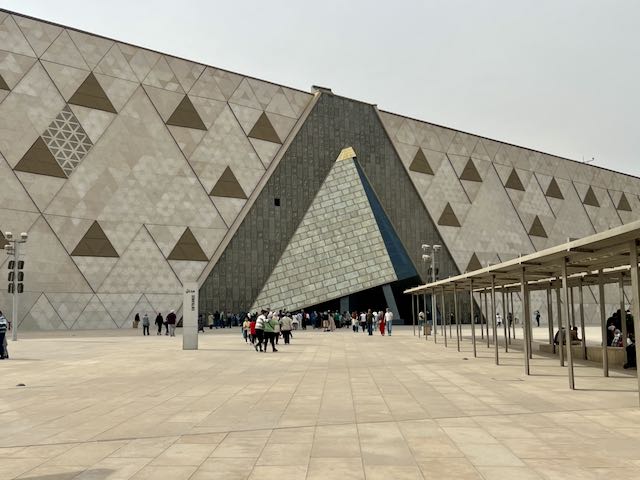
Assem Omar, our Egyptologist, travelled with us back to Cairo to be able to accompany us to the remaining wonders of our trip. After landing at the airport, even before we got to The Four Seasons Hotel, we were off for another adventure. This time to visit the Grand Egyptian Museum (GEM).
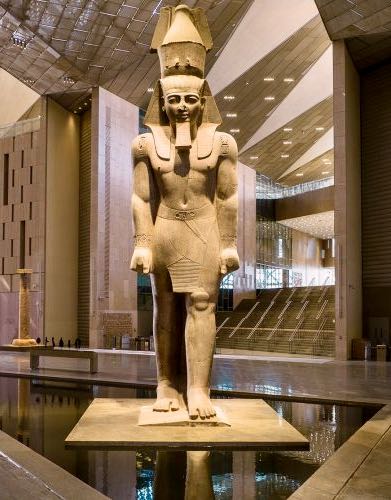
The Grand Egyptian Museum is an archaeological museum about 1.2 miles from the Giza pyramid complex. The Museum will host over 100,000 artifacts from ancient Egyptian civilizations, and will ultimately include the complete Tutankhamun collection, and many pieces will be on display for the first time. With 872,000 sq ft of floor space, it will be the world’s largest archeological museum. One of the stated reasons for building such a fantastic museum was to show the world that Egypt has the ability to take care of its history in the hope that those items held in non-Egyptian museums might be returned home.
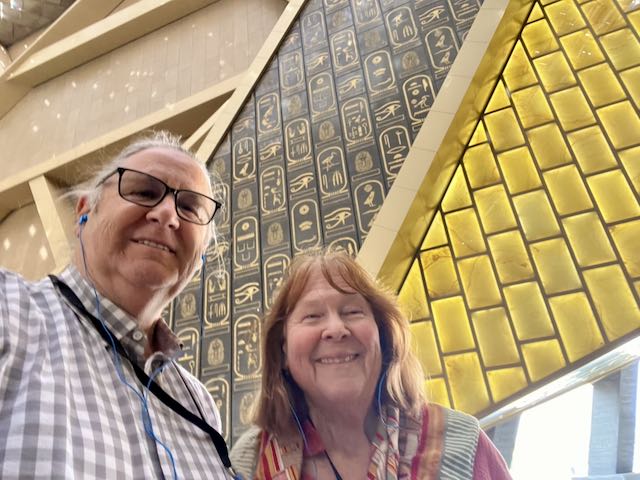
Originally scheduled to open in 2012, but due to a multitude of problems, it has only partially opened this past October 2024. The Grand Hall, Grand Staircase, commercial area, 12 public galleries and the exterior gardens are open for tours, while the Tutankhamun gallery and Solar Boat Museum are not yet open to the public. Most of Tutankhamum tomb material is still at the Egyptian Museum opened in 1901, which we visited earlier when we first arrived in Cairo.
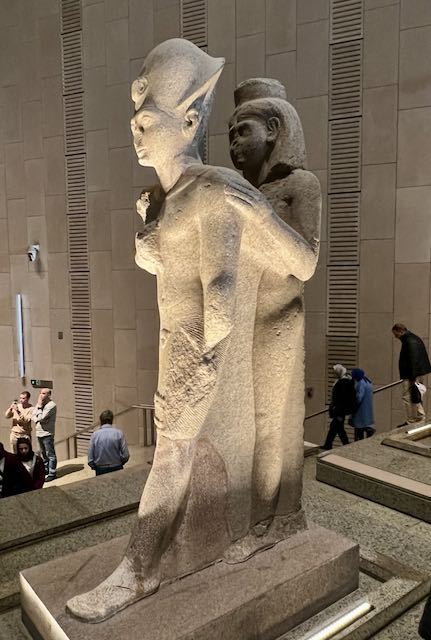

The building’s north and south walls line up directly with the Great Pyramid of Khufu and the Pyramid of Menkaure. The front of the museum includes a large plaza filled with date palms and a façade made of translucent alabaster stone. Inside the main entrance is a large atrium, where large statues are exhibited.
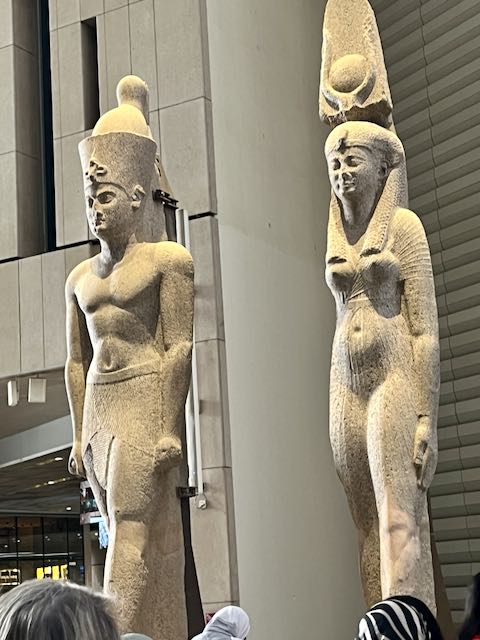
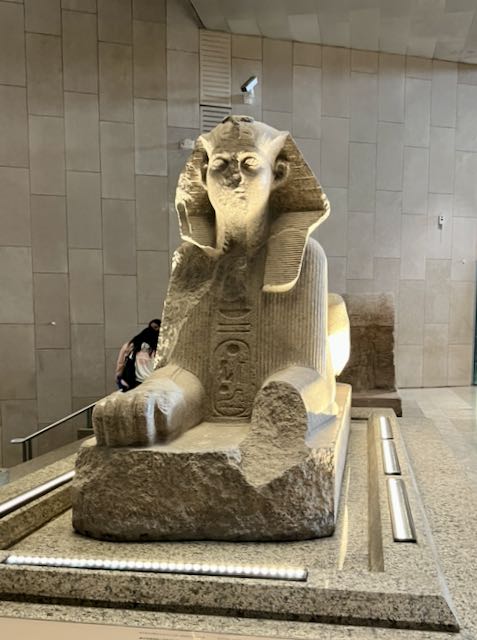
In January 2018, an 82-ton 3,200-year-old statue of Ramses II was installed in the entrance to the Museum. It was the first artifact to be installed and had to be installed during construction due to its size.
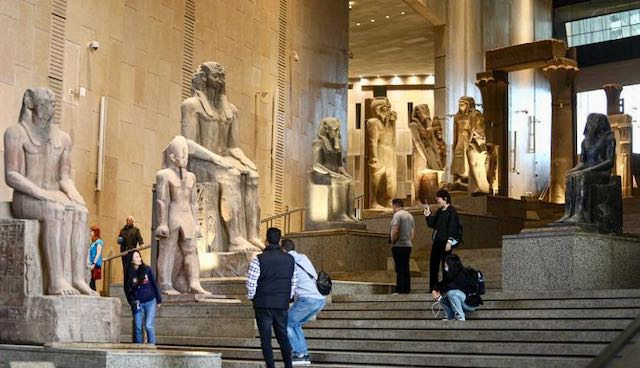
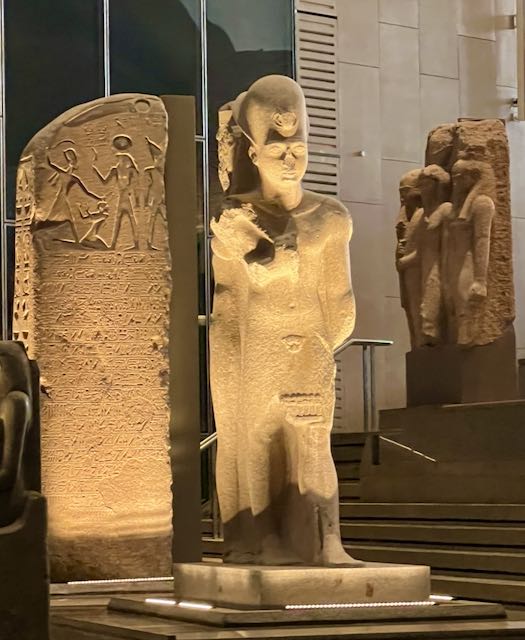
The Grand Egyptian exhibits cover about one-third of the total museum’s 50-hectare grounds displaying over 13,000 artifacts in 12 galleries arranged by time period (c.3100BCE~400CE) and theme (Society/Kingship/Beliefs) from the museum’s total collection of 50,000 objects.
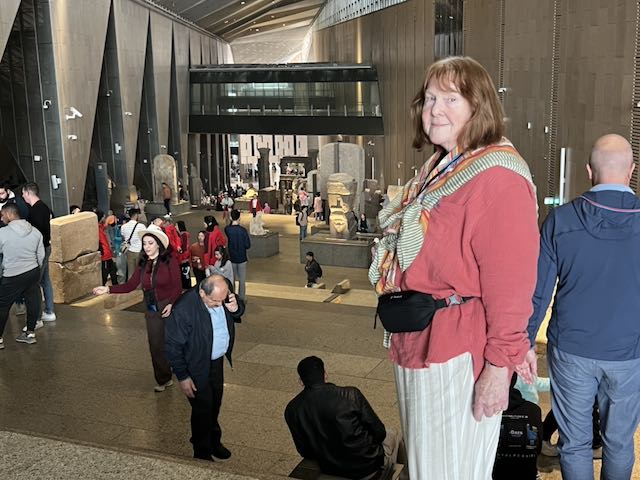
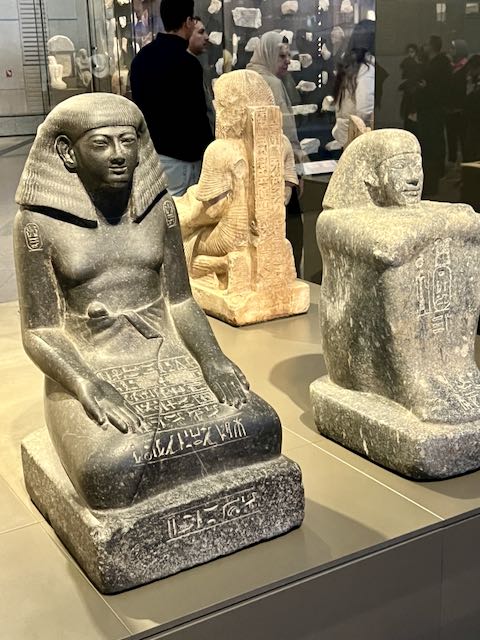
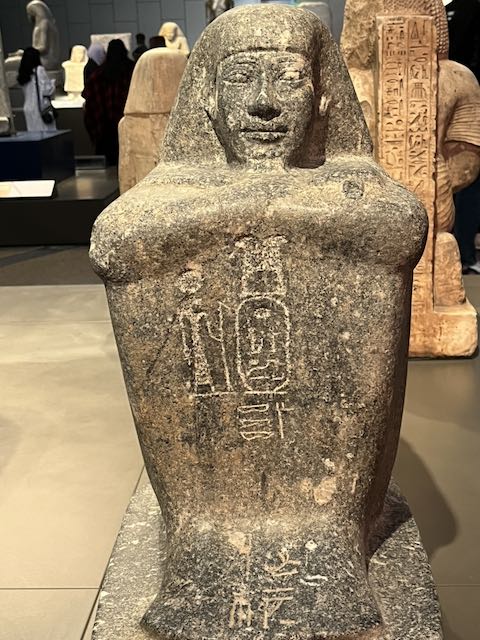
Minmose succeeded his father Hori as High Priest of Onuris, a god of war and hunting whose cult center was at Thinis near Abydos.
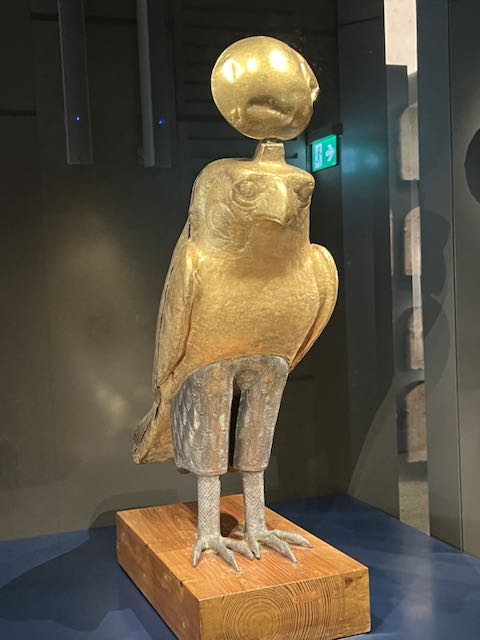
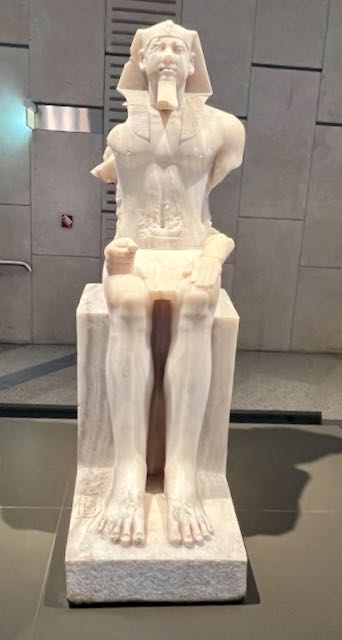
This impressive falcon is hollow inside, suggesting that it once contained a smaller coffin of a sacred bird. The gold sun disk on its head emphasised the divine nature of this special falcon.
The valley temple of King Menkaure’s pyramid complex at Giza was never finished. Some statues, including this one, were delivered and stored in the unfisished building. The king is shown with strong muscular body, small head and very large hands and feet.
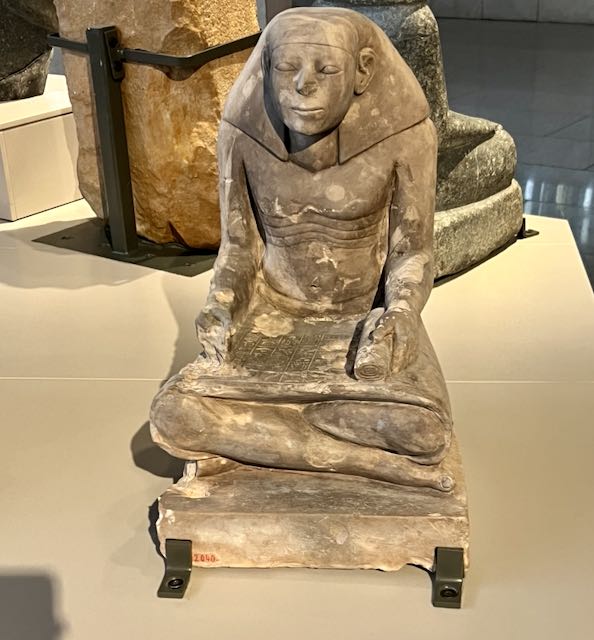
Some officials displayed their high level of education by showing themselves as scribes. The papyrus scroll spread over their lap indicated that they could read and write
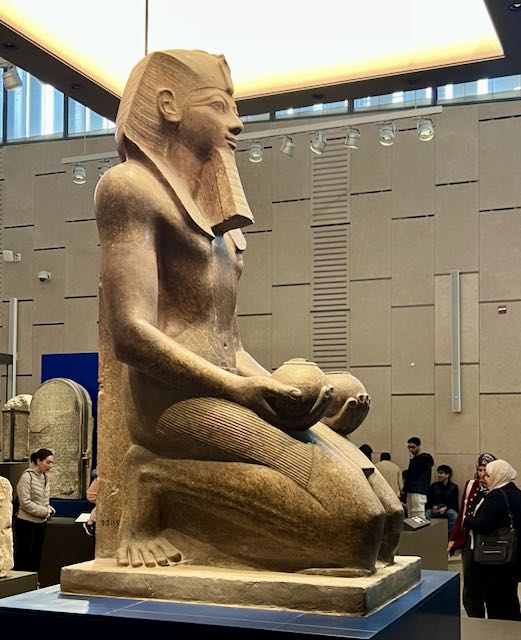
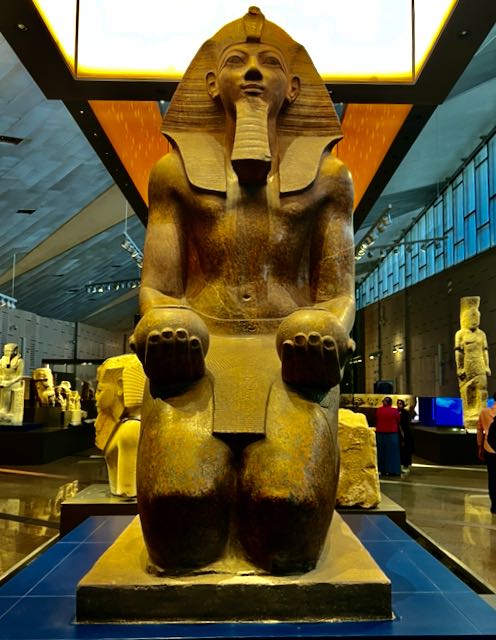
Kneeling Statue of Queen Hatshepsut
Kneeling royal statues had been produced since the Old Kingdom, but Hatshepsut’s sculptors were the first to make them in over life-sized forms. Large statues offering nu pots to the state god Amun-Re lined the processional path in her mortuary cult temple.
Once we got inside, Assem directed us up the grand stair and highlighted various objects on display. Many of the items were similar to those we had seen in other locations or at least the gods they represented were familiar.
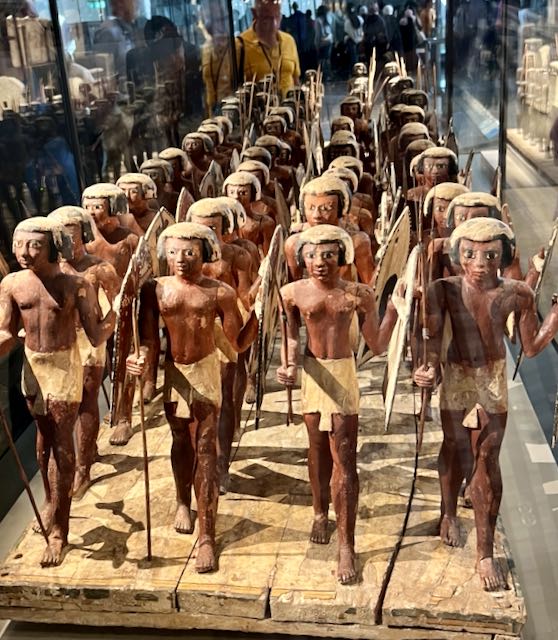
In the gallery area, we wandered through various exhibits and marveled at all the items on display.
The overall museum is quite amazing. At the end there is a view of the Pyramids bringing the entire adventure into perspective.
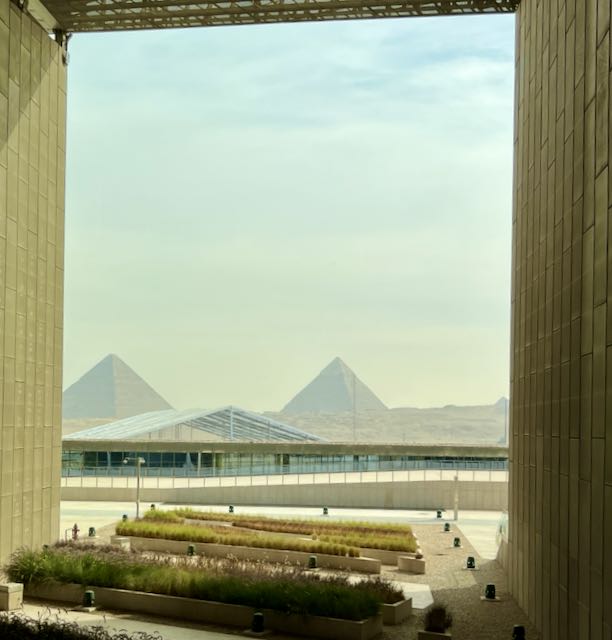
The overall museum is quite amazing. At the end there is a view of the Pyramids bringing the entire adventure into perspective.
I am so glad you were able to get inside the museum, which was still in the planning phase when we were there in 2009. Fortunately, the BCE statuary and temples that you have photographed on this trip haven’t changed a whole lot since we were in Egypt :). Thank you for sharing your adventures!
Did you see the Tutankhamen gold mummy mask?
What a fantastic adventure for you and for me to read and appreciate the pyramids and Egyptian history. When you mentioned the Nubian warriors, I was aware of that culture thanks to you.
Yes, we saw the mask at the Egyptian Museum we visited on our first day in Egypt. It will be moved to the GEM once the place is completed.
Trip of a lifetime!!